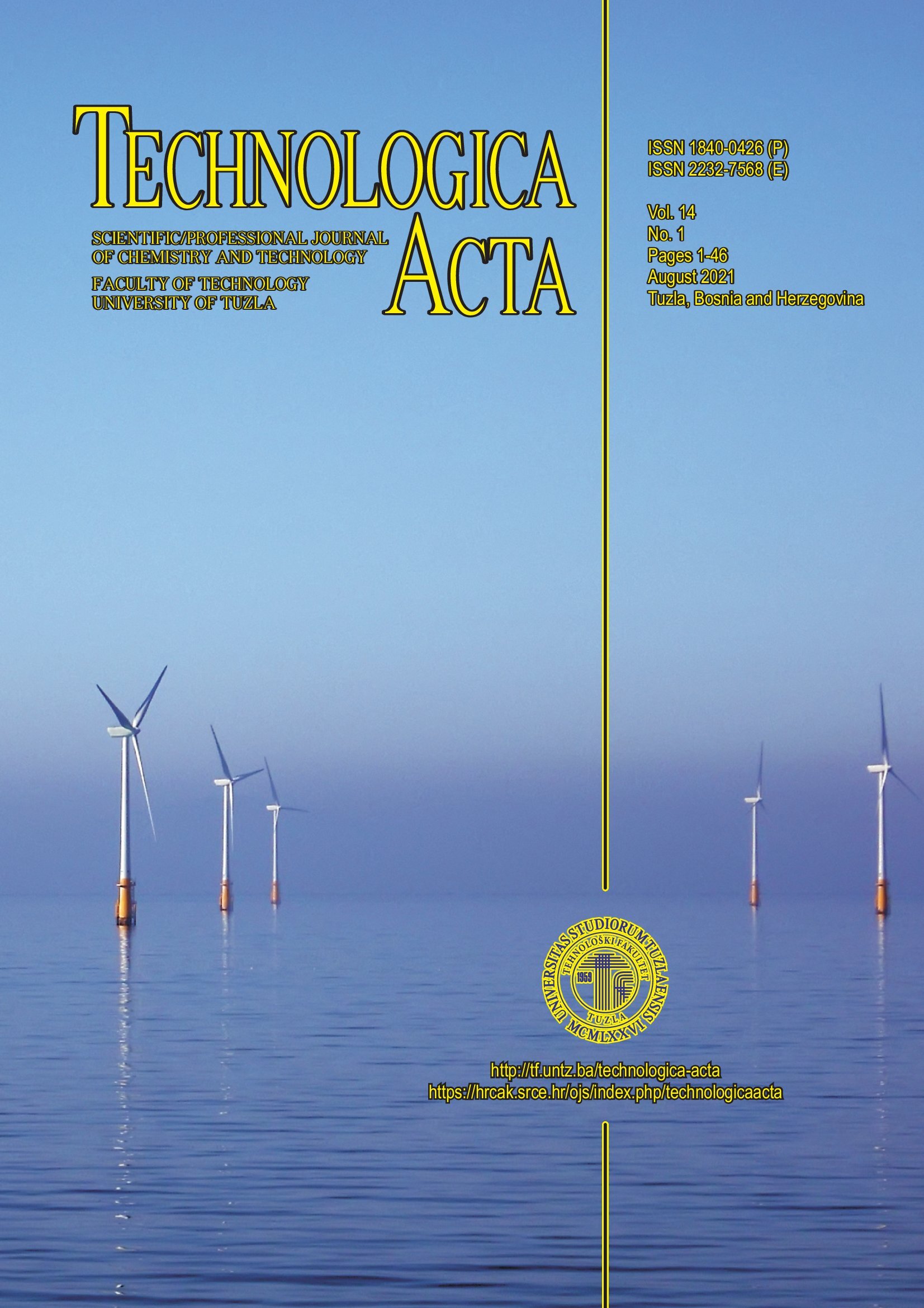Plum pits as natural sorbent for removal of lead ions
Keywords:
adsorption, plum pits, modified and unmodified biosorbent, leadAbstract
Water quality is deteriorating over the years, and the main source of water pollution is industrial, agricultural and municipal wastewater. Heavy metals, organic compounds and microorganisms, present even in traces, can be very dangerous to human health, aquatic organisms and the environment. Therefore, in this study was investigate the possibility of modified and unmodified plum pits as biosorbents for Pb (II) ions removal from aqueous solution.
Experimental data have shown that these bisorbents show a certain potential for application in the metal removal process. The feasibility was tested for an unmodified and modified biosorbent based on plum pits in the range of concentrations 150-200 mg/l (unmodified sample) and 100-200 mg/l (modified sample) at a contact time of 30 and 60 minutes . Adsorption parameters were determined using the Freundlich isotherm. The results showed that unmodified biosorbent based on plum pits with increasing concentration from 150 mg/L to 200 mg/L leads to a large increase in the percentage of removal of Pb (II) ions, with no significant effect on contact time. In contrast to the unmodified sample, the modified biosorbent based on plum pits % of removed Pb (II) ions significantly increases the contact time at the initial Pb (II) concentration of 100 mg/L, while at the initial concentration of 150 mg/L and longer mixing, the removal efficiency increases and amounts to 86.032 %. The calculated values of the parameters used in the Freundlich isotherm indicated the existence of high-energy sorption centers in the unmodified bisorbent based on plum pits, while the calculated values of the parameters used in the Freundlich isotherm for the modified biosorbent based on plum pits showed moderate mode adsorption.


